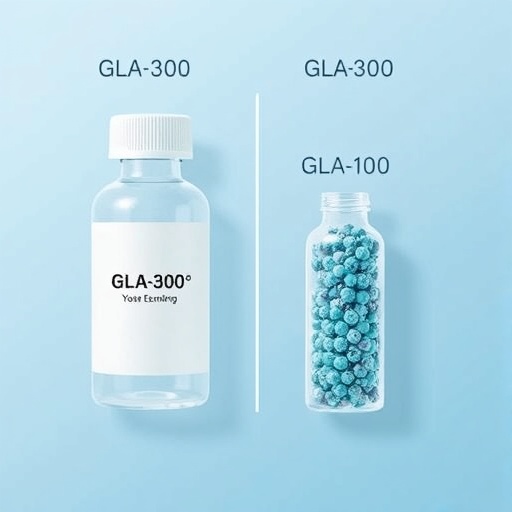In a groundbreaking advancement at the crossroads of nonlinear optics and photonic integration, researchers have unveiled a programmable on-chip platform capable of intricate spatio-spectral control over second-harmonic generation (SHG). This development signals a transformative leap in how light can be manipulated within compact optical circuits, promising to revolutionize applications ranging from quantum information processing to advanced optical communications.
Fundamentally, second-harmonic generation is a nonlinear optical process where two photons of the same frequency combine within a nonlinear medium to produce a single photon at twice the frequency. Traditionally, engineering the spectral or spatial properties of such nonlinear generation required independent control mechanisms, often confined to specific device dimensions. The latest research overcomes these limitations by exploiting the full two-dimensional programmability of the quadratic nonlinear susceptibility distribution—denoted as χ^(2)—inside a photonic waveguide.
The heart of the innovation lies in the design and projection of specially tailored patterns onto the nonlinear waveguide, which is then pumped with broadband ultrafast pulses. These patterns correspond to precisely engineered quasi-phase-matching (QPM) gratings that vary both longitudinally and transversely. By superimposing different grating structures, the researchers have devised a method to simultaneously sculpt the spatial distribution and spectral content of the generated SH light, forging a versatile platform for spatio-spectral holography on a chip.
Experimentally, the setup utilized involves a sophisticated combination of a reflective grating and a 4f imaging configuration, allowing for the capture of spectrally resolved spatial profiles in one dimension. This arrangement enables the simultaneous measurement of wavelength-dependent spatial intensity distributions of the SHG output with exceptional resolution. The waveguide was excited with pulses of approximately 60-femtosecond duration at a 100-MHz repetition rate, with an on-chip average pump power of about 40 milliwatts and a bias voltage calibrated at 600 volts to optimize nonlinear interaction.
The first demonstration involved the generation of distinct spatial intensity peaks at five specific output wavelengths. By designing QPM patterns with different longitudinal periods and strategically modulating the transverse domain, the team created a spatio-spectral hologram where the number of generated spatial peaks increased with wavelength. The resulting hyperspectral images showcased clearly resolved Gaussian peaks, each localized at predetermined spatial coordinates along the waveguide and tuned to their designated harmonic wavelength. This level of control not only validates the programmability of the system but also opens pathways toward multi-channel frequency conversion and multiplexed optical functionalities on a monolithic platform.
Expanding on this capability, the researchers sought inspiration from earlier proposals of SHG holography to realize wavelength-dependent Airy beam generation. Airy beams are non-diffracting waveforms exhibiting distinctive asymmetric intensity profiles and self-acceleration, characteristics highly prized in beam shaping and particle manipulation. By combining two QPM grating patterns, each with contrasting cubic spatial chirps and unique longitudinal periodicities, the team successfully generated oppositely chirped Airy beams at two distinct wavelengths. Spatial imaging revealed the hallmark fringes and curved trajectories of the Airy beams, which manifested in inverted orientations correlating to their respective spectral components.
This dual functionality—tailoring both spectral and spatial characteristics of the SHG output via a single, reconfigurable QPM waveguide—demonstrates an unprecedented level of nonlinear wavefront control. It is noteworthy that the approach leverages well-established lithographic and domain-inversion techniques, rendering it highly adaptable to existing photonic manufacturing workflows. The continuous voltage tuning also suggests dynamic reprogrammability, extending its utility to adaptive photonic systems.
From a fundamental physics perspective, the work underscores the profound implications of engineered χ^(2) landscapes. Traditionally, phase matching in nonlinear optics dictates stringent conditions on interacting wavelengths and propagation directions. By crafting complex quasi-phase-matching gratings across two spatial dimensions, the researchers decouple these constraints, enabling multichannel frequency conversion processes to coexist and interact coherently within a compact footprint.
The implications of this technology ripple across various domains. In quantum photonics, where control over photon wavepacket profiles is critical, such programmable nonlinear devices could serve as integrated sources of tailored entangled photon pairs or frequency-converted quantum states. In optical signal processing, the capacity to multiplex spatial and spectral channels dynamically could catalyze new architectures for wavelength-division multiplexing and on-chip spectro-temporal holography.
Moreover, the approach’s versatility hints at future expansion toward higher-order nonlinear processes or coupling with other degrees of freedom, such as polarization or orbital angular momentum, broadening the horizons of on-chip optical manipulation. The synergy of broadband ultrafast pumping and programmable nonlinear media also points toward potential applications in ultrafast spectroscopy and nonlinear imaging, where simultaneous spatial and spectral selectivity enhances signal extraction in complex material systems.
While the present demonstrations operate within specific wavelength bands and experimental configurations, the foundational principles pave the way for scalable implementations across diverse material platforms, including lithium niobate, silicon-based nonlinear waveguides, and emerging 2D materials. Integration with active electronics and control circuitry could also enable real-time modulation and adaptive feedback control of nonlinear optical interactions.
In conclusion, the synergistic tailoring of nonlinear susceptibility profiles across spatial dimensions establishes a versatile paradigm for programmable nonlinear photonics. By harnessing two-dimensional quasi-phase-matching patterns, the researchers have opened a new frontier in the simultaneous manipulation of spatial and spectral properties of frequency-converted light on an integrated platform. This innovation not only enriches the toolbox of nonlinear optics but also lays critical groundwork for future photonic technologies that demand dynamically reconfigurable, multi-dimensional control of light at the chip scale.
Subject of Research: Advanced programmable nonlinear photonics enabling simultaneous spatial and spectral control of second-harmonic generation on a chip.
Article Title: Programmable on-chip nonlinear photonics
Article References:
Yanagimoto, R., Ash, B.A., Sohoni, M.M. et al. Programmable on-chip nonlinear photonics. Nature (2025). https://doi.org/10.1038/s41586-025-09620-9
Image Credits: AI Generated
Tags: advanced optical communication systemscompact optical deviceslight manipulation techniquesnonlinear waveguide engineeringoptical circuit design innovationsphotonic integration breakthroughsprogrammable nonlinear opticsquantum information processing applicationsquasi-phase-matching gratingssecond-harmonic generation technologyspatio-spectral control in photonicsultrafast pulse manipulation




